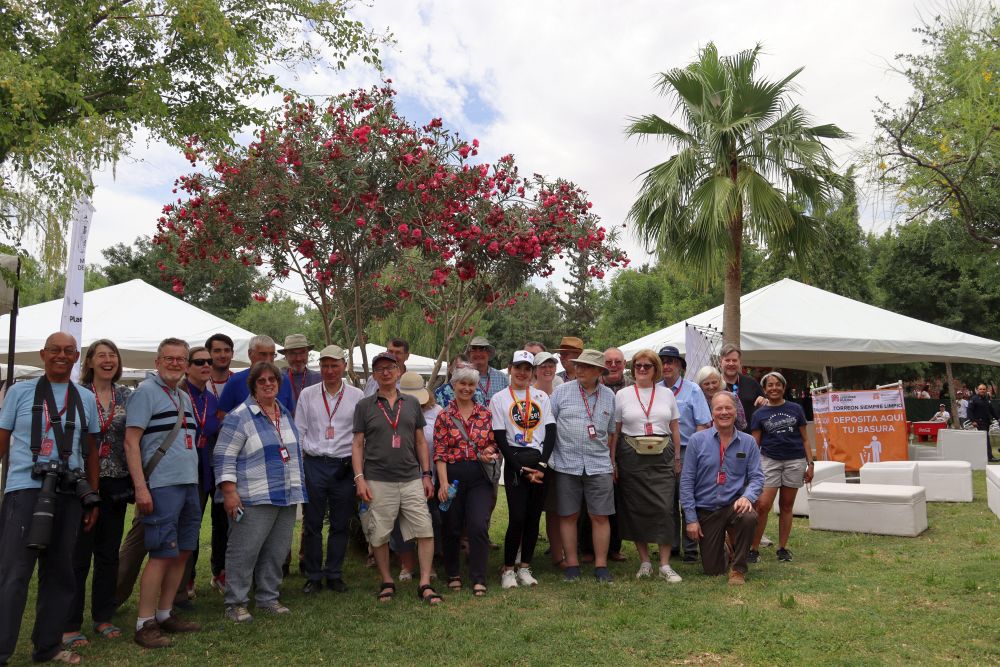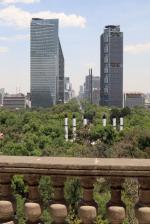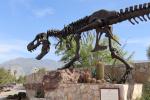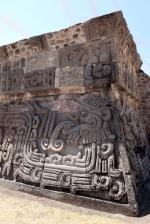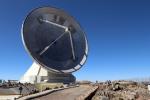Earlier this year I returned to Mexico (after an absence of some years) with a group of Oxford and Cambridge alumni. The main purpose of our visit was the 8 April 2024 total solar eclipse, which crossed Mexico and the US. Cloud cover predictions suggested that Torreón, a small city in the Coahuila state of north-eastern Mexico, would be a good place to view it from, which by happy chance also has a planetarium.
The total eclipse
Roger Davies, emeritus professor of astronomy at Oxford and our trip scholar, and I managed to contact the planetarium's director who couldn't have been more accommodating and gave us a viewing spot not far from a group from NASA! After some anxious days watching the weather forecast, on the day the clouds parted and we were lucky enough to have a perfect view of the eclipse, which included over 4 minutes of totality - enough time for the birds to nest and for us to see Jupiter with three of its moons. Afterwards we were serenaded (if that's the right word) by a Mariachi band, all very Mexican and totally unforgettable.
Mexico City
Our trip had started in Mexico City. I was very impressed with how relaxed and peaceful the streets felt, even late at night. The Mexican economy is doing well, and security concerns are now restricted to some quite specific corners of a country the size of Europe. The Anthropological Museum was as good as ever, but I was particularly impressed with how the excavations and site museum at the Templo Mayor have developed. The temple was part of Tenochtitlan, built by the Mexica people in the 14th century, destroyed by the Spanish in 1521, and only really re-discovered in the 1970s. The site museum now has 8 halls, and is worth (at least) half a day.
A dinosaur museum
We then flew north to Monterrey and drove to the Museo del Desierto at Saltillo. This fascinating museum holds a large collection of dinosaur fossils, and also a display of pleistocene megafauna to almost rival that seen in La Plata museum (Argentina). Another new visit for me, 2 hours west of Saltillo, was Parras de la Fuente, a small town founded by Jesuits in 1598. We had a very interesting tour of the oldest winery in the Americas, Casa Madero.
Cuernavaca
After the eclipse we spent 2 nights in Cuernavaca, just south of Mexico City, where we admired the Diego Rivera murals in the Palacio Cortés. When deciding which pre-Columbian site to visit I had heard that Xochicalco had astronomical references, and we weren't disappointed. There is a pyramid with beautiful carved reliefs which depict total solar eclipses which the Maya were able to predict with great accuracy.
Puebla
We then visited Puebla, the centre for Mexico's main astronomical studies and observatories. We were privileged to be shown round the Large Millimeter Telescope (LMT) and the High Altitude Water Cherenkov (HAWC), a gamma-ray observatory, both of which are on the Pico de Orizaba mountain (the former at a breath-taking 4,850m). We saw a solar telescope at the National Institute of Astrophysics, Optics and Electronics (INAOE) campus in Tonantzintla and listened while Roger gave a fascinating talk on "Stars, Planets and Life" to invited astronomers and students at the city's beautiful Salón Barroco.
Teotihuacán
The final stop on our tour was Teotihuacán, an incredibly impressive and rather enigmatic pre-Aztec site north of Mexico City. Several of us decided to take a morning balloon ride, during which we got an extraordinary view of the entire complex which includes a 4km central avenue and two large pyramids honouring the Sun and Moon.
Our sample itineraries for Mexico have been updated recently, but can only ever be a helpful starting point to learn what routings work well, given the country's size and variety.

